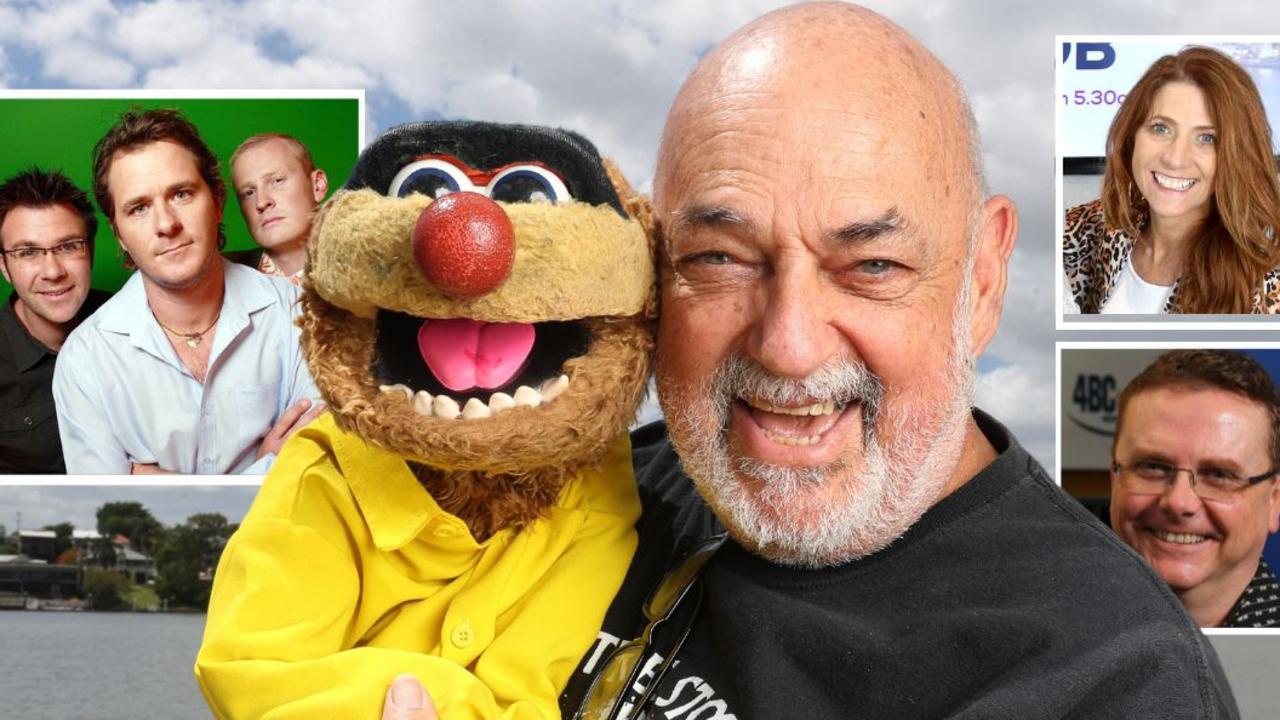Phone app data reveals 55 Greater Brisbane suburbs with worst plane noise
Brisbane’s 55 worst suburbs for aircraft noise have been revealed with 24,000 recordings capturing how loud it actually gets.
North
Don't miss out on the headlines from North. Followed categories will be added to My News.
Cannon Hill, Murarrie and Norman Park are the three Greater Brisbane suburbs most affected by noise from the region’s new flightpaths, an analysis of smartphone noise recordings has revealed.
It comes as Brisbane Airport Corporation (BAC) has announced the first direct Brisbane-to-Japan flights since lockdown started in 2020.
A total of 24,315 recordings have been uploaded to the explane app since 2020 when the flightpaths came in — and the city’s second runway opened.
An average of 72 decibels (dB) across 55 suburbs was reported by members of the public.
But the average in some suburbs directly under the new flightpaths was much higher.
In some parts of those suburbs, such as on hilltops or where sound bounced off buildings, the disturbance was higher again.
The average noise level in Cannon Hill and Murarrie since 2020 was 80dB — equivalent to a busy CBD street.
Norman Park was the second worst-affected at 78dB, followed by Ascot and Kangaroo Point on 76dB and Albany Creek, Tingalpa, Clayfield and Keperra on 75dB.
Yeronga was the quietest at 63dB, or about the same as a normal conversation.
The explane app was developed by Dutch residents angry at the expansion of Schiphol airport, a part owner of Brisbane Airport.
BAC has previously claimed the app was inaccurate, while Brisbane residents claimed BAC’s N20 noise contour map was not accurate.
Annerley resident David Diggles, a member of resident lobby group Brisbane Flight Path Community Alliance (BFPCA), who collated the data, said while he was not particularly bothered by noise at the moment he was concerned it would worsen.
“Brisbane Airport Corporation’s own 2020 masterplan boasts about how the lack of a curfew is a major competitive advantage over other airports,’’ he said.
“I’m pretty good at ignoring noise but it’s already hard to enjoy TV at peak hours now.
“I get noise from both the new and old runways — it’s in stereo.
“For some people, it’s the constant drone that bothers them, but with others it’s the occasional much noisier planes (usually turboprops flying in from regional Queensland airports) well above the suburb average that wake them up.’’

BAC spokesman Stephen Beckett said the airport operators understood residents were “eager for improvements’’.
“We are confident the recommendations from the independent Trax International report (which recommended a raft of flight path design changes but no curfew or flight caps) will deliver change,’’ he said.
“These include short, medium and long term modifications to flight paths, including maximising activity over water, rather than homes.
“Brisbane Airport supports this process by Airservices Australia (ASA, the federal industry regulator) to deliver improvements for communities.”
ASA has been trialling steeper approaches and takeoffs. It has also been allowing planes to take off and land in opposite directions at night, in an effort to lower noise levels ahead of longer-term flight path changes.
“Airservices is conducting Noise Improvement Trials and as part of the Brisbane Airport Flight Path Changes Post Implementation Review (PIR), we also conducted a series of community workshops throughout Brisbane last September to seek feedback,’’ a spokeswoman said.

“Airservices is continuing to engage with the community, government and industry to inform the final PIR recommendations planned for release later in the year.
“No final flight path changes have been made as yet.
“All flight path changes require a rigorous safety, design and environmental assessment, which takes time to complete.
“We expect to complete the draft PIR Report and release it for public review by the end of this month.’’
BFPCA acting chairman Marcus Foth said residents did not trust ASA or the data from its noise monitoring stations.
“Furthermore, there are not enough noise recorders installed across Brisbane to give an accurate picture of the noise pollution,” Dr Foth said.
“In submissions to a Senate inquiry, Dr Eric Ancich — a noise acoustics engineer in NSW — questioned the integrity of these aviation noise modellings and recordings, suggesting that the aviation industry tends to employ averages in order to artificially lower the data.
“This enables them to avoid reporting the actual maximum noise levels, which often exceed the recommended maximum of 45dB set by the World Health Organisation.”
He said Brisbane residents were now the second most-active contributors to the explane app in the world, after the Dutch, as a result of their mistrust of authorities and problems with noise.

The explane data came as BAC announced non-stop Brisbane-to-Japan passenger services were about to resume for the first time since the pandemic.
From December 1, Qantas would fly three times a week between Brisbane and Haneda Airport in Tokyo.
The route has been secured under the $200 million joint State Government and industry Attracting Aviation Investment Fund, which was created to boost Queensland’s tourism sector.
“Since the 1980s, the Japanese market has been an important one for Queensland. The start of non-stop flights from Tokyo to Brisbane will once again open this pipeline to support jobs and the local tourism industry,” Brisbane Airport Executive General Manager of Aviation, Ryan Both, said.
Qantas would deploy Airbus A330-300 aircraft on the route, capable of carrying up to 297 passengers.
Brisbane to Haneda services will operate Monday, Thursday and Saturday, departing at 11.50am and arriving at 8pm in Haneda.
Flights will depart Haneda at 9.30pm on Monday, Thursday and Saturday and arrive in Brisbane at 7.35am.





